PORTUGAL
Royal Arms

|
Heraldry |
|
|
|
|
|
County |
|
|
|
|
|
House of Burgundy |
|
|
|
|
|
Henry |
1097-1112 |
|
|
|
|
Teresa |
*1080-†1130 Countess 1095-1128 |
|
|
|
|
Alfonso
I |
*1106-1111-†1185 Count 1128-1139 |
|
|
|
|
Kingdom |
|
|
|
|
|
Alfonso
I |
King 1139-1185 |
|
King
Alfonso I Dating
from the late 12th or early 12th century, this may be the earliest
representation of the first Portuguese monarch. Already crowned with sword in hand and orb, the king also
wears the royal robe. (Credits:
Carmo Archaeological Museum / José Pessoa / IMC). [1] 1179 Pope Alexander III recognizes Portugal as an independent country and a vassal of the Church in the Manifestis Probatum The bula reads: Alexander, Bishop, Servant of’ the servants of God, to the Dearest son in Christ, Afonso, Illustrious King of the Portuguese, and to his heirs, in perpetuity: It is clearly demonstrated that, as a good son and catholic prince, you have rendered innumerable services to your mother, the Holy Church, intrepidly exterminating through hardships and military prowess the enemies of the Christian name and diligently propagating the Christian faith, thereby leaving to generations still unborn a name worthy of memory and an example deserving of imitation. The Apostolic See must love with sincere affection and strive to efficiently attend, in their just requirements, those chosen by the divine Providence for the government and salvation of the people. We, therefore, because of your qualities of prudence, justice and worthiness of government, take you under St.Peter’s and our own protection, and grant and confirm by apostolic authority to your excellent domain, the kingdom of Portugal, full honours of kingdom and the dignity which corresponds to kings, as well as all places which, with the help of the celestial grace, you have wrested from the hands of the Saracens, and on which your neighbouring Christian princes may not claim any rights. And so that your devotion and service to St. Peter, prince of the Apostles, and to the Holy Roman Church may grow, we decide to extend this same concession to your heirs and, with the help of God, to defend it for them, as far as our apostolic magistrature is concerned. 1183 Signal rodado de
Afonso Henriques em um documento de – Emblem 12 escutcheons charged wit besant cross
wise. L.:
alfonsvs portvgalensivm rex; pax lvx rex lex. |
|
|
Sancho
I |
1185-1211 |
|
1195 No selo do reinado de D. Sancho I (1185-1211) pendente de documento datado de 1 de Marco de 1195 (a.D.). vêem -se os cinco escudetes em amêndoa postos em cruz com os “pontos” ou besantes já delidos. Os escudetes laterais deitados. (Coleccao Especial, c. 28, n°7, do Acquivo Nacional da Torre do Tombo). |
|
|
Alfonso
II, the Fat |
1211-1223 |
|
Leaf
with King Alfonso II and his seal (not documented) The picture on top is to be compared with the Alfred
jewel of the english king Alfred the Great (897-899). |
|
|
|
|
|
1211 Selo de D.Afonso II autenticando a carta de
confirmaçao, feita em 1211, de uma doaçao de Afonso Henriques a D. Bernardo,
abade de Claraval. (Arq.
Nac. Da Torre do Tombo). Arms: Five escutcheons strewn with
besants cross wise. L.: regis portvgalensis. |
1217 No reinado de D. Afonso II num selo pendente de documento datado de 1 de Maio de 1217 (a.D.), os cinco escudetes em amêndoa e os “pontos” ou besantes estao nitodos. Os besantes enchem o campo. Os escudetes laterais mantêm-se deitados. (Coleccao Especial, c. 28, n° 34, do Arquivo Nacional da Torre do Tombo). Selo de chumbo autenticando a carta de confirmaçao, feita por D. Afonso II em 1217, de uma doaçao feita por D. Sancho I ao mosteiro de Alcobaça. Arms: Five escutcheons strewn with
besants cross wise. . L.: sigillum [......]onsis. |
|
|
|
|
1218 Sêlo de chumbo da carta de confirmaçao, feita
por D. Afonso II em 1218, de uma doaçao feita por Afonso Henriques ao
mosteiro de S. Vicente de Fóra. (Arq. Nac. Da Torre do Tombo). Arms: Five escutcheons strewn with
besants cross wise. L.: regis portvgalensis. |
1221 Sêlo de chumbo de D. Afonso II,
autenticando o testamento do monarca (1221) (Arq. Nac. da Tôrre do Tombo) Arms: Five escutcheons strewn with
besants cross wise. L.: regis portvgalensis. |
|
Sancho II, Capelo |
1223-1248 |
|
A document of D. Sancho II (Biblioteca Pública de
Braga) This
document is dated „anno regni nostri
undecimo mense iunio e M CC XXX IIII.” (the eleventh year of our reign in
the month of June of 1234), and therefore dates from the reign of Sancho II (1223-1248). In the
lower margin is a square cross which is the Christian symbol of administative
authority, a symbol also in the beginning of the title of the ruler in the
legends on seals. In the
cross: Rex Sance (*1154-†1211) Regina dõna mahalda (†1157, (mo)) Regina dõna dulcia (†1198, (wife)) Rex dõn fernand (of Leon, *1135-†1188) Rex dõn petr (*1187-†1258 (2so)) Rex dõn alfons (*1183-†1223 (1so)) Regina dõna sãcia (fasis) Regina dõna turasca (?) (†1220 1sowife) Apart
from Peter all these persons were deceased in 1234. |
|
|
Alfonso
III |
1248-1279 |
|
1260 Sêlo
de cera de Afonso III, autenticando uma carta de couto passado ao chanceler
Estevam Anes em 1260 Arms: Five escutcheons strewn with besants cross
wise and a bordure with 7 (8) castles. L.: X S: ALFONSI REGIS [...] COMITES BOLONIE.
After Wijnbergen [2] Arms: Argent
five escutcheons Azure strewn wit besants, per cross saltire, and a bordure
Gules strewn with three-towered castles
Or Other
arms with a bordure with castles in the time of Alfonso III: 1253 Charles d’Anjou, frère de St. Louis. A.: Semée
de France à la bordure chargée de petits chateaux. L.: sigillum karoli , filii regis, comitis andegravensis. C.: A.: D’or a
quatre pals de gueules. L.: comes et marchio provincie et comes forcalquieri.
(Douët d’Arcq n° 340) 1272 D’argent au lion de sable, à la bordure de gueules
chargée de 14 chateaux à 3 tours d’or. L.: le.Roy de Grenade (Wijnbergen n°
1302) 1680 Le Roy d’Affrique, (al. Anferique) [....]
Peirescanus Codex Regi d’Anfrique pro insignibus adscribit d’argent a un lyon
d’azure bandé de geules, a douze Chasteaux d’or sur la bordure. [....] Le Roy
d’Anfrique, d’argent a un lyon d’azur, bordé de geules, douze chasteaux d’or
sur la bordure. (Ducange Tunisia) |
|
|
Denis the Farmer |
1279-1325 |
|
Obverse and reverse of the seal of King Denis Equestrian
seal , the King on horseback with a crowned helmet. On the reverse the royal
arms |
|
|
Alfonso IV |
1325-1357 |
|
Wax seal of D. Afonso IV obverse and reverse |
|
|
Pedro
I the Justicer |
1357-1367 |
|
|
|
|
Ferdinand
I |
1367-1383 |
|
|
|
|
Interregnum |
1383-1385 |
|
|
|
|
House
of Avis |
|
|
|
|
|
John
I |
1385-1433 |
|
Royal
Seal of King John I of Portugal.,1385-04-15 The National Archives: E30/307 Five
escutcheons strewn with besants, cross wise, the dexter and the sinister
transverse. All
surrounded by a legend. To: Crested Arms |
|
|
Duarte |
1433-1438 |
|
Seal of Duarte 1434 From: Sousa, Antonio Caetano de:
Historia Genealogica da Casa Real Oirtugueza. Tomo 4. LIX [3] Arms: Portugal the border charged with
the cross of the Order of Avis L.: Sigillum Domini Eduardi Dæi gratie
Regis Portugalite & Algarbii Domini Cepte. Feita em Santarem aos 8 dias do mes de Abril. ElRey o mandou; Alvaro Ànnes o fas anno do acimento de Nosso Senhor Jesu Chrislo de 1434. |
|
|
Alfonso
V, the African |
1438-1481 |
|
Sigillum
Domini Alphons Dei gratia R.egis Portugalie Algarbii Cepteque Domini
1449-03-02 Sousa LXV
Arms
with cross of Avis, 1457-04-14 Sousa LXIII
Battle
scene from the
Portuguese conquest of Asilah (Arzila), 24.08.1471 from the Wattasids, took place on 24 August 1471. Paço dos Duques de Bragança tapecaria The picture is dominated by flags and shields with a red straight cross on a white field (the arms of the Holy See, the suzerain of Portugal, the royal coat of arms of Portugal and the personal arms of Alfonso V consisting of a red shield with a golden mill-wheel spilling blue drops, the Impresa of Alfonso. In addition, the shields of the soldiers can be seen of a heart-shaped model that can be associated with North Africa. The waterwheel spreading drops may be a symbol of the Afonso the industrious alchemist shedding tears because of the death of Isabella, the wife of Alfonso on 2 December 1455. [4]
When the campaigns in Africa were over, Afonso V found new grounds for battle in neighboring Castile. On 11 December 1474 King Henry IV of Castile died without a male heir, leaving just one daughter, Joanna la Beltraneja. However, her paternity was questioned; it was rumored that his wife, Queen Joan of Portugal had an affair with a nobleman named Beltrán de La Cueva. The death of Henry ignited a war of succession with one faction supporting Joanna and the other supporting Isabella, Henry's half-sister. Afonso V was persuaded to intervene on behalf of Joanna, his niece. He betrothed himself to her, proclaimed himself king of Castile and led troops into the kingdom. Because of their close blood-relationship, a formal marriage had to wait for papal dispensation. An ensuing battle between the prtenders ended in a stalemate both sides claiming victory but Afonso's prospects for obtaining the Castilian crown were severely damaged. After the battle, Afonso sailed to France hoping to obtain the assistance of King Louis XI in his fight against Castile. But finding himself deceived by the French monarch, he returned to Portugal in 1477. Disillusioned, he abdicated for a few days in November 1477 in favor of his son John II, then after returning to the throne, he retired to a monastery in Sintra, where he died in 1481
Seal of Alfonso V, 26.10.1475 Sousa LXI. Arms: ¼: 1&4 ¼ Castile and Léon; 2&3: Portugal, the border charged with
the cross of the Order of Avis L.: D. Affonso pela graça de Deos Rey de Castella, de Leaó, de Portugal, e de Tolledo, e de Galiza, de Sevilha, de Cordova , e de Mureia, e de Jaem , e dos Algarves, da quem , e dalem mar em Africa, e de Aljazira, e de Gibaltar , de Bijcaya , e de Molina, a quantos esta Carta virem , &c. Wax seal of the chancellery, on the letter of donation to D. Henrique de Menezes, Count of Loulé Passed in its City of Çamora the 26 of October of the year of 1475. In the Royal File of the Tower of Tombo in Caía of the Crown, drawer J, pack 10
foto Tripadvisor Tomb
of Infante João (*†1451) of Afonso V Batalha Arms of Portugal with a label of three (= Infante) To Æ Royal
Achievement |
|
|
John II, the Perfect
Prince |
1481-1495 |
|
Joao II o principe perfeito Shortly after ascending to the throne in 1482, John II monopolized the exploration and commerce in the Costa da Mina and Gulf of Guiné by the crown, determining the construction of a factory to support the flourishing commerce of alluvial gold in the region. Under the command of Diogo de Azambuja was quickly built the "Castle of St. George da Mina" with stones previously carved and numbered in Portugal, sent as ballast in ships, and used for building numerous fortifications. John II was a great defender of the policy of the Atlantic exploration initiated by his uncle, the Infante D. Henrique. The Portuguese discoveries became his government priority, as well as the pursuit of the sea route to India. During his reign the following discoveries were made: • 1484 - Diogo Cão discovers the mouth of the Congo River and explores the coast of Namíbia • 1488 - Bartolomeu Dias crosses the Cape of Good Hope, becoming the first European to sail in the Indian Ocean from the west • 1493 - Álvaro de Caminha, the colonization of the islands of São Tomé e Príncipe,, the island of the Prince being baptized in honor of the only son and heir of the king, Afonso, Príncipe de Portugal (1475) • Land expeditions led by Pêro da Covilhã and Afonso de Paiva to Cairo, Adém, Ormuz, Sofala e Abissínia, the land of the legendary Preste João, are sent from where they send reports on these stops, leaving D. João II with the certainty of power to reach India by sea. • 1493-1494 - John II challenges the Bula Inter Coetera and negotiates a treaty directly with the Catholic kings: the Treaty of Tordesillas. • 1495 - Delineated the first voyage on the sea route to India. The command was initially assigned to Estevao da Gama (1430-1497) Nevertheless, given the death of both, it was delegated in 1497 by the new king Manuel I of Portugal to the son, Vasco da Gama. From 1482 to 1485, the improvement of the
royal arms was on the agenda of the Cortes that had been called by King John
II. Eventually it was decided to leave out the cross of the Order of Aviso as
a heraldic anomaly in the future. At the same time, the escutcheons on the
sides of the quinas were set upright and the number of castles was set at
seven.
Seal
of John II, 1484 Sousa LXVII Arms: Portugal, the border charged with the cross of the Order of Avis L.: Sigillum... Dei gratia Regis Portugalie & Algarb.. 1484
Seal
of John II 1489 Sousa LXVI Arms: Portugal L.: Sigillum... Serenissimi Ioannis II Dei gratia Regis Portugalie & Algarbiorun Citra & ultra mare in Africa Guineæ Dominus. 1489-05-30
Portrait of a
Portuguese king, probably John II
in the »Livro dos Copos« (Arquivo Nacional da Torre do Tombo). The
picture should have been created after 1485 because the cross of the Order of
Aviso is omitted in the arms. The crown is striking. |
|
|
Manuel I, the Fortunate |
*1469-†1521 1495-1521 |
|
25
february 1516 No legend Sousa LXXVI
|
|
|
The impresa or personal emblem of King Manuel I was an amillary spherr which we notice on a tapestry from the eighties of the late (Æ Crest) 15th century. In a manuscript of Manuel I this armillary sphere is a the charge of a shield parted per pale of Gules and Argent (Æ Achievement)
These arms can
be considered to be the arms of the Portuguese empire of the African
possessions. Æ See: The Portuguese
Seaborne Empire: Armillary Sphere |
|
|
Portrait
of D. Manuel I Crónica do rei D. Afonso V de Portugal.
Rui de Pina (1440-1522) Manuscript illuminated on parchment,
Lisbon, 16th century 65 Î 36 Î6 cm. Lisbon, A.N.T.T. Casa Forte-Crónicas Inv.
358. [5] King Manuel I on his throne between the crowned arms of Portugal and a golden armillary sphere, mounted on a golden axis mounted on a pedestal |
|
|
|
|
|
King
Manuel I on horseback. Behind him his ensign. The ensign shows the banner or ensign being Argent, a cross of five escutcheons Azure, five balls in saltire Argent. As a crest the armillary-sphere of the Empire and on the horse-clothes the symbol of the Ordem de Cristo. The armillary-sphere is repeated on the harness of the kings horse. From: Francisco Álvares: Verdadera informaçam das terras do Preste Joam. (Lisbon, 1540, Frontispiece). The book is a report of the diplomatic voyage of the author in 1515 tot the Ethiopian Court.[6] |
|
|
João III |
*1502-†1557 1521-1557 Knight of the Fleece n° 168, Doornik, 1531 |
|
Crowned arms of John III With the Order of
the St. Michel, France (1469)
The armilary-sphere, 20-05-1538 Sousa LXXXIV
Sousa LXXXII SIGILLUM EXCELSSI JOANNIS 3 REGIS PORTUGALIÆ &
ALGARBIORUM CITRA & ULTRA MARE IN AFRICA AC GUINEÆ DOMINI 26-05-1539
Sousa LXXXVII SERENISSI: MI SEBASTIANI I REGIS PORTUGALIÆ
& ALGARBIORUM CITRA & ULTRA MARE IN AFRICA AC GUINEÆ DOMINI
16-09-1555
1559 Stall plate of John III as a Knight of the
Fleece Arms: Portugal crowned with acrown of
thee leaves and two fleurs de lis L.: Treshault Tresexellēt et Trespuissant Prince Jehan Par
la grace de Dieu Roy de Portugal Trespassé. (Coll. St. Baafskathedraal, Gent.) |
|
|
Sebastian |
*1554-†1578 1557-1578 |
|
The crowned arms of King Sebastian [7] The inscriptiosn reads: SAGITÆ TVÆ ACVTÆ
POPVLI SVB TE CADENI IN CORDA INIMICORVM REGIS (sharp arrows will fall under you, the
enemies of the king) |
|
|
Cardeal d. Henrique |
1578-1580 |
|
Coat
of Arms of D. Henrique before his accession to the throne (1571) Arms: Portugal, with a label of one between two banners: D. ¼ Castlla and Leon; S.: Vert, a cross patonce Argent. Crown: Ducal crown and cardinal’s hat. L.: Encircling the arms:
HENRICVS CARDINALIS INFANS PORTUGALLIÆ LEGATVS ALATERE
Arms of Cardinal King Henry The arms crowned with a royal crown and a cardinals’ hat with ten fiocchi. In the upper sinister corner an the lower dexter corner the arms of the Grand Inquisitor and in the two other corners the mitres of the Archbishop of Braga and the Archbishop of Évora. The arms of the Inquisition were: Arms: Argent, a latin cross between an olive tree an the Sword of Justice surrounded by the motto EXURGE DOMINE ET JUDICA CAUSAM TUAM. PSALM. 73» (Psalm 74) (Arise O God and defend your cause.) |
|
|
House of Habsburg |
|
|
|
|
|
Philip I (II) |
1580-1598 |
|
Arms of Philip I, 1597 Arms: Per fess of Spain and the
Netherlands, the chief charged with Portugal Crown: Royal crown of three hoops Order: Of the Fleece |
|
|
Philip II (III) |
1598-1621 |
|
Arms of Philip II Arms, Crown and Order as Philip I |
|
|
Philip III (IV) |
1621-1640 |
|
Arms of Philip III Arms, Crown and Order as Philip I |
|
|
House of Braganza |
|
|
|
|
|
Joao IV |
1640-1656 |
|
|
|
|
Alfonso VI |
1656-1667 |
|
Seal
of Alfonso VI (n.d) Sousa XCVIII Arms: Portugal Crown: Royal crown of five hoops L.: X ALPHONSVS VI DEI
GRATIA PORTVGALÆ ET ALGARBIORVM REX |
|
|
Pedro II |
Regent
1667-1683 1683-1706 |
|
Seal
of King Pedro II Sousa C. Arms: Portugal Crown: A royal crown of five hoops Order: Collar and medal of the Order of Christ.
|
|
|
John V, the
Magnanimous |
1706-1750 |
|
Sousa CVIII. Legend: Joannes V. Dei Gratia ·Rex
Portugaliæ, et Algarbiorum citra, et ultra mare in .:Aftica; Dominus Guineæ, Conquistitionis,
Navigationis, Comercii Æthiopiæ, Arabiæ, Periæ, Indiæ que
&c.
Perhaps from a coach of Joseph Museu Nacional
dos Coches, Lisbon (No documentation) |
|
|
Joseph I |
1750-1777 |
|
Royal
arms of Joseph I Chapel of St. Barbara, Peniche Fortress
Royal arms ceiling Council of Vila Vicosa (1770) |
|
|
Pedro III |
1777-1786 |
|
|
|
|
Maria I John VI |
1777-1816 Regent 1799-1816 |
|
Royal
arms as on coins of Queen Maria with the legend MARIA I PORT. ET ALG.
REGINA 1789 |
|
|
John VI |
1816-1826 |
|
D. João por graça de Deos, Rei do Reino
Unido de Portugal e do Brazil e Algarves, d’aquem e d’além mar, em Africa,
Senhor da Guiné e da Conquista, Navegação e Commercio da Ethiopia, Arabia,
Persia e da India, etc. Faço saber aos que a presenta carta de
lei virem que tendo sido servido unir os meus Reinos de Portugal, Brazil e
Algarves, para que juntos constituissem, como effectivamente constituem hum
só e mesmo Reino; he regular e consequente o incorporar em hum só escudo real
as armas de todos os tres Reinos, assim, e da
mesma fórma que o Senhor Rei D. Affonso III, de gloriosa memoria,
unindo outr’ora o Reino dos Algarves ao de Portugal unio tembem as suas armas
respectivas: e occorrendo que para este effeito o meu Reino do Brazil ainda
não tem armas que caracterisem a bem merecida preeminencia a que me aprouve
exalta-lo: hei por bem e me praz ordenar o seguinte: 1° - Que Reino do Brazil tenha por
armas huma esphera armilar de ouro em campo azul. 2° - Que o escudo real portuguez,
inscripto na dita esphera armilar de ouro em campo azul, com uma corôa
sobreposta, fique sendo, de hoje em diante, as armas do Reino Unido de
Portugal, e do Brazil e Algarves, e das mais partes integrantes da minha
Monarchia. 3° - Que estas novas armas sejão
por conseguinte as que uniformemente
se hajão de empregar em todos os estandartes, bandeiras, sellos reaes e
cunhos de moedas, assim como em tudo mais em que até agora se tenha feito uso
das armas precedentes. E esta se cumprirá como nella se
contém. Pelo que mando, etc. Dada no Palacio do Rio de Janeiro,
aos 13 de Maio de 1816. El-Rei com guarda (a) Marquez de Aquiar com os registos competentes [8] That is: D. João, by the grace of God, King of the United Kingdom of Portugal and Brazil and Algarves, from here and beyond, in Africa, Lord of Guinea and the Conquest, Navigation and Commerce of Ethiopia, Arabia, Persia and India, etc. Letter of law to be known and presented to all who have served to unite my kingdoms of Portugal, Brazil and Algarves, so that together they constitute, and effectively constitute one and the same Kingdom; It is fitting and consequent to incorporate in a single royal shield the arms of all three Kingdoms, thus, and of the same form as King D. Affonso III, of glorious memory, once uniting the Kingdom of the Algarve with that of Portugal their respective arms occur: and, since for this purpose my Kingdom of Brazil still has no arms which characterize the well-deserved pre-eminence to which it pleased me to exalt it: It pleases me to order the following: 1° - That the Kingdom of Brazil has for arms a armillary sphere of gold on a blue field. 2°. That the royal Portuguese shield, inscribed in the said armillary sphere of gold on a blue field, with a crown above it, shall henceforth be the arms of the United Kingdom of Portugal, and of Brazil and the Algarves, and of the parts of my Monarchy. 3°. That these new arms are therefore to be uniformly used in all banners, flags, royal seals, and coins, as well as in all else in which the preceding arms have hitherto been used. And this will be fulfilled as this is contained. What I say, etc. Given at the Palace of Rio de Janeiro, on 13 May, 1816. El-Rei with guard (a) Marquez de Aquiar with the relevant records
Arms
of the Kingdom of Brazil
Arms
of the United Kingdom of Portugal, Brazil and the Algarves As on the original decree
Arms of the
United Kingdom with legend: JOANNES
VI D. G. PORT. BRASIL ET ALG . REX
Royal
arms of Portugal,Brazil amd Algarves 13.05,1816 With garland of branches of olive and
laurel
Crown
of João VI Made by Antonio Gomes da Silva, 1817 Æ See also: Brazil |
|
|
Pedro IV |
Emperor of Brazil 1822-1831 King of Portugal
1826-1828 |
|
1827 |
|
|
Miguel I |
1828-1834 |
|
On a coach, Museu
Nacional dos Coches, Lisbon.(No documentation)
Coat
of arms of Miguel With medallion and ribbon of the three orders
(Of St. Jago, of Christ and of Avis) From: C. Hildebrandt aus
Gelbke, Abbildung von Wappen, 1831,
1834 |
|
|
Maria II |
1834-1853 |
|
Royal arms of Portugal with collar of Order of
Christ From: Brockhaus
and Efron Encyclopedic Dictionary, 1846
Royal Arms with crowned mantle |
|
|
House
of Saxe-Coburg-Gotha |
|
|
|
|
|
Pedro V |
1853-1861 |
|
Royal Arms with crowned mantle 1855 |
|
|
Luis I |
1861-1889 |
|
Royal Crown by Anatole Célestin Calmels and Leandro Souza Braga, 1866 Golden carving, wood, fine gold, ink
Royal arms with garland of olive and oak (1989)
|
|
|
Carlos I |
1889-1908 |
|
Royal Arms
with crowned mantle 1900
Royal Arms with crowned mantle On a coach door, Museu
Nacional dos Coches, Lisbon.(No documentation) |
|
|
Manuel II |
1908-1910 |
|
1908-1910 Back to the 18th
century design |
|
|
|
|
|
To Æ Republic of
Portugal |
|
|
|
|
 © Hubert de Vries 2019-03-12
© Hubert de Vries 2019-03-12
































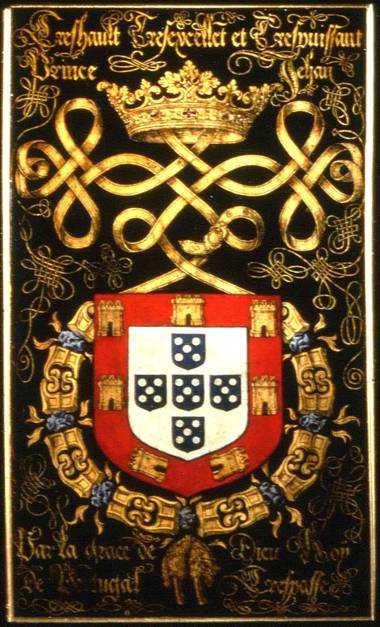



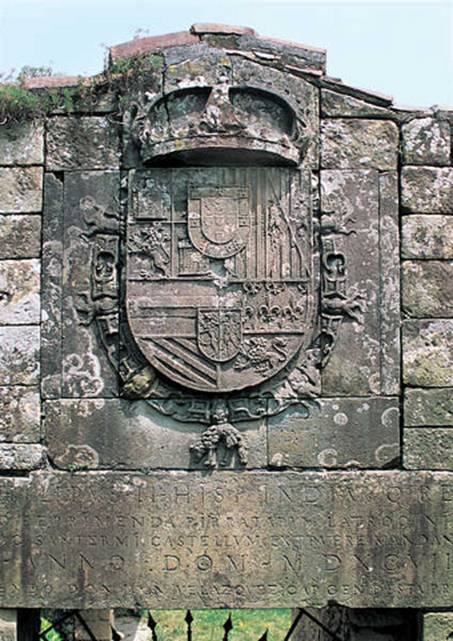
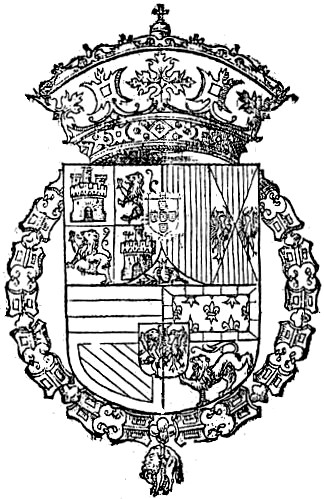
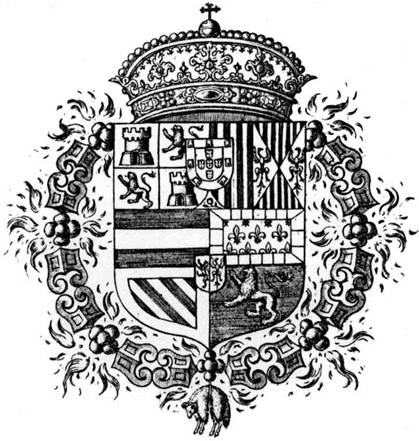

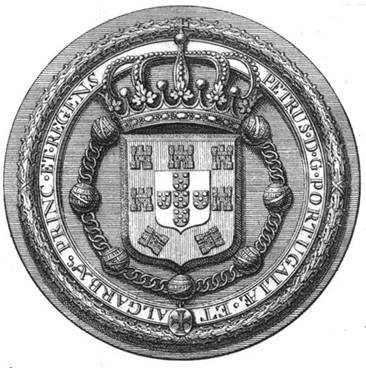
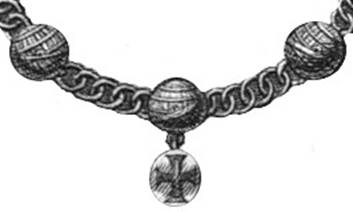
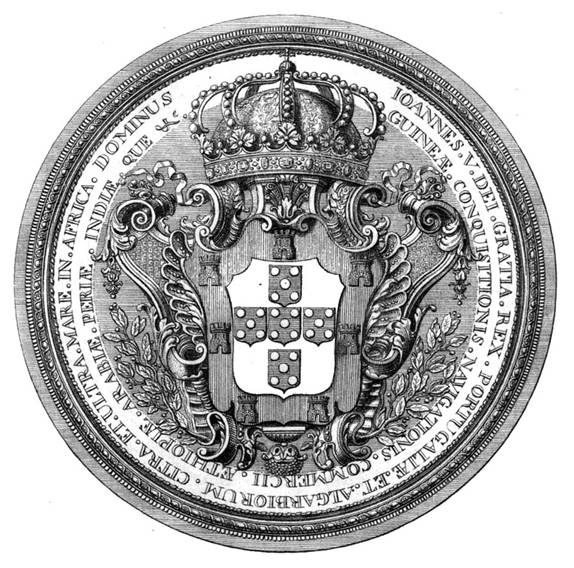
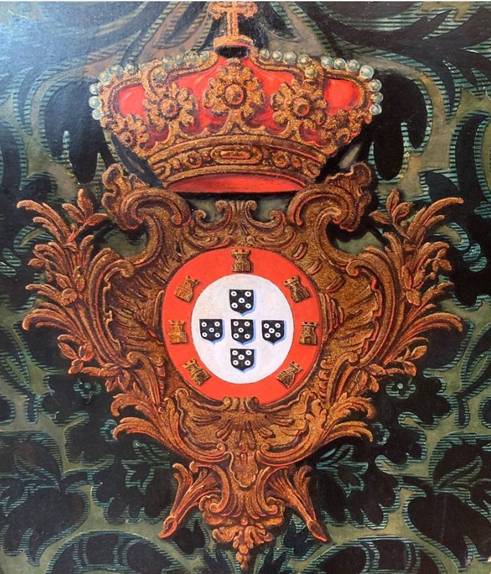
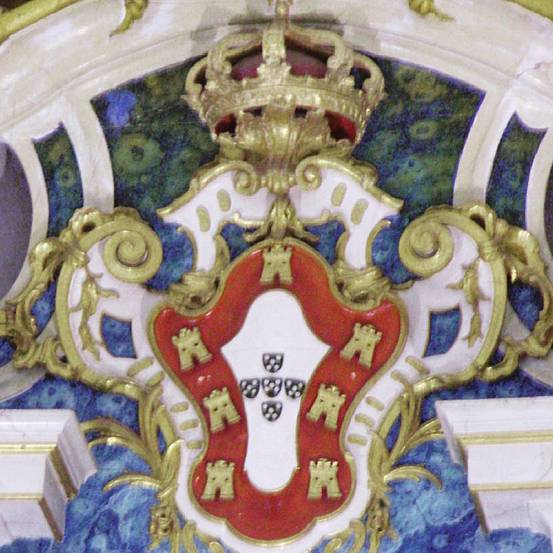
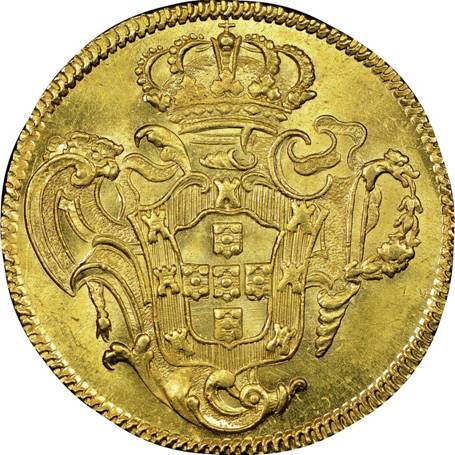
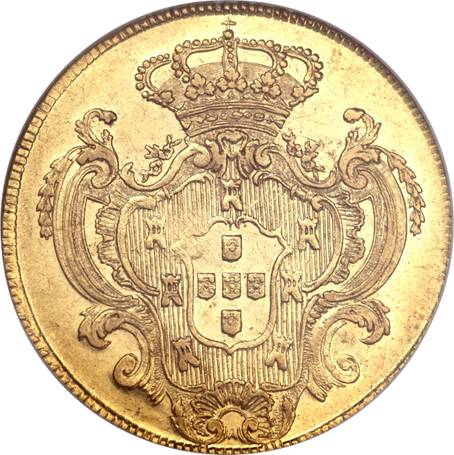
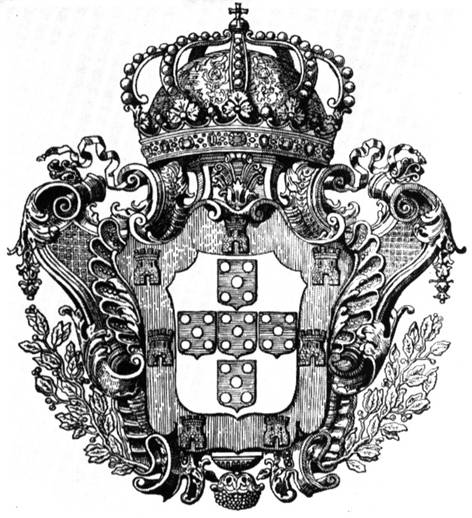
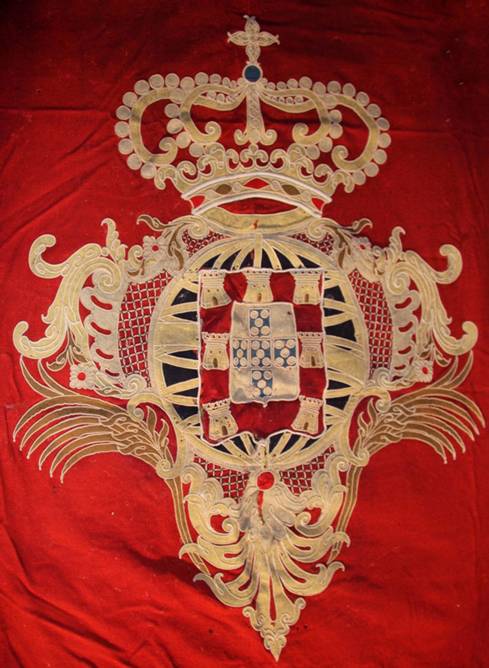
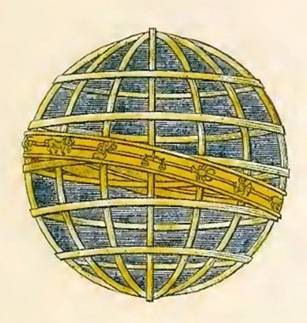
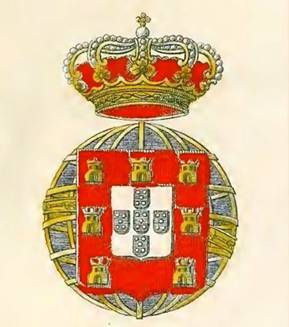
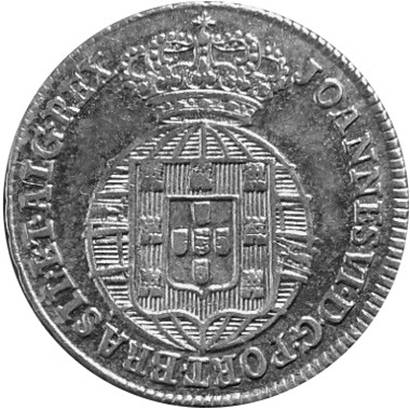
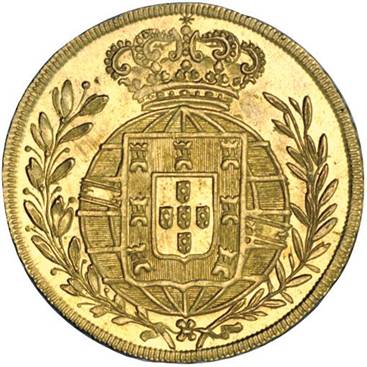
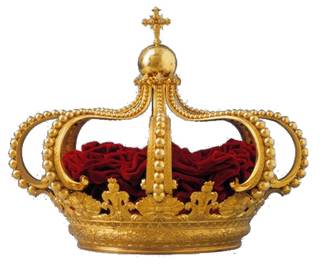
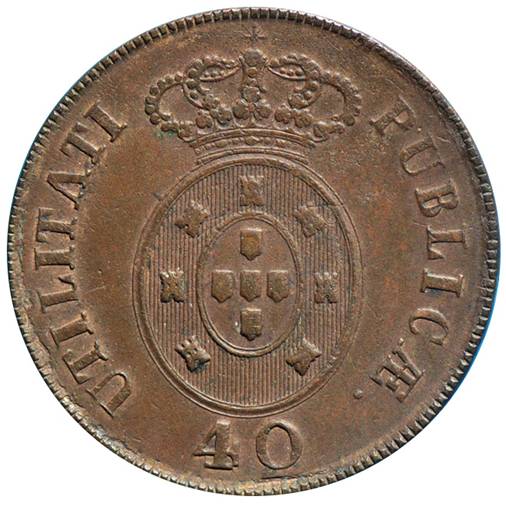
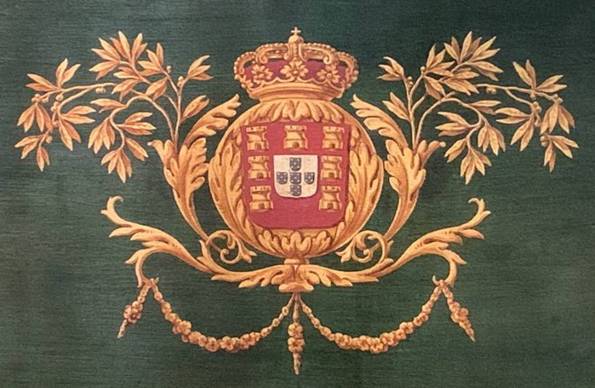
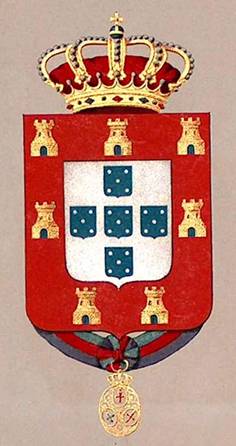
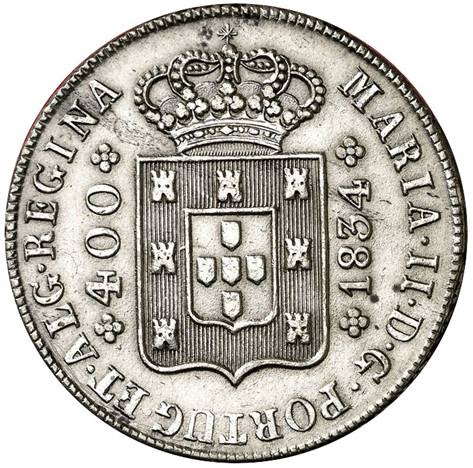
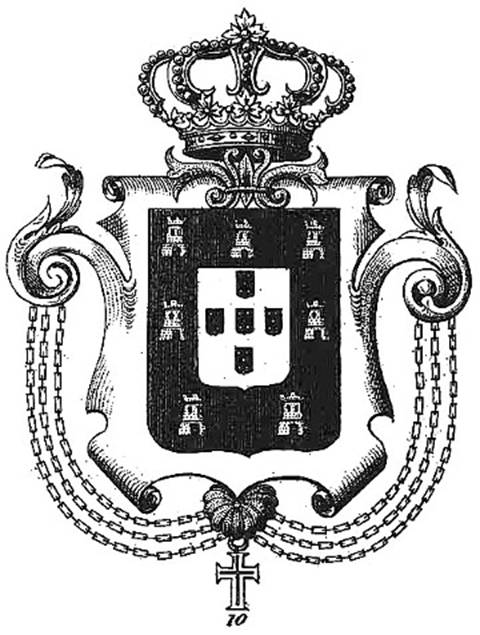
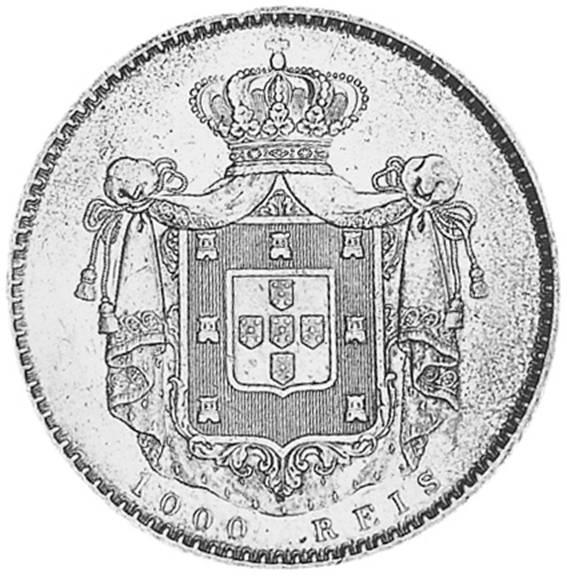
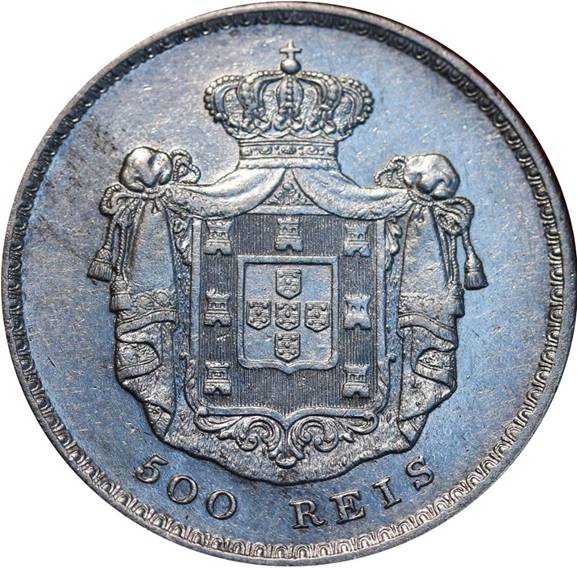
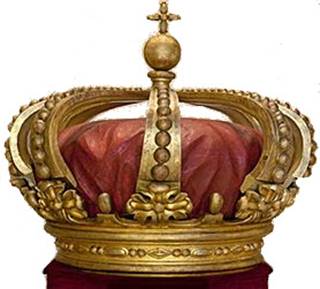
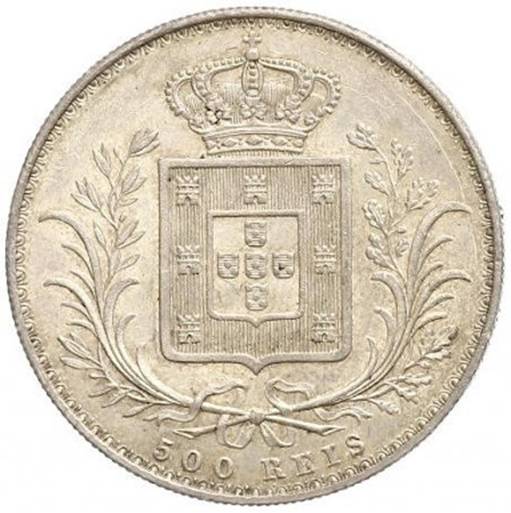
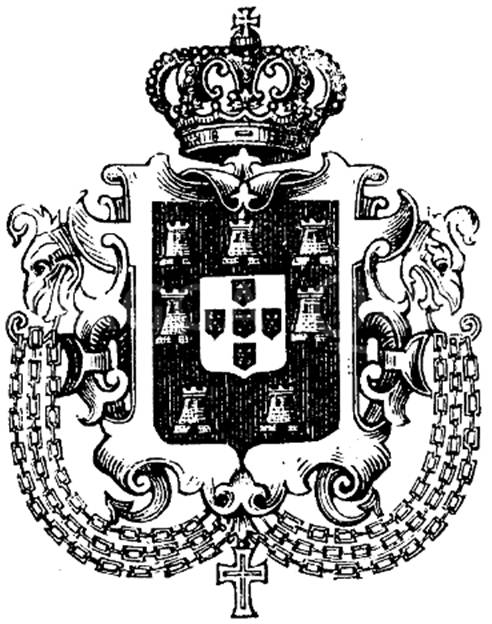
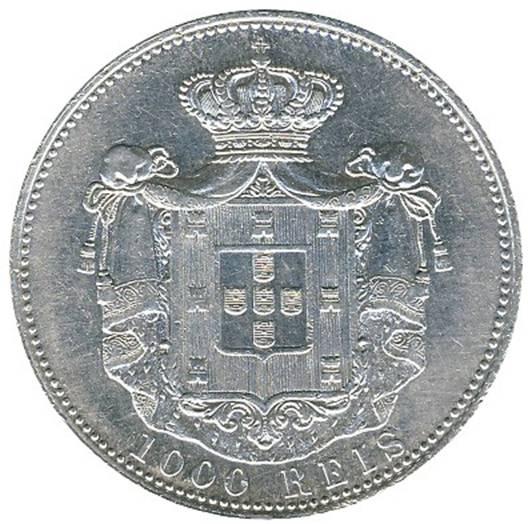
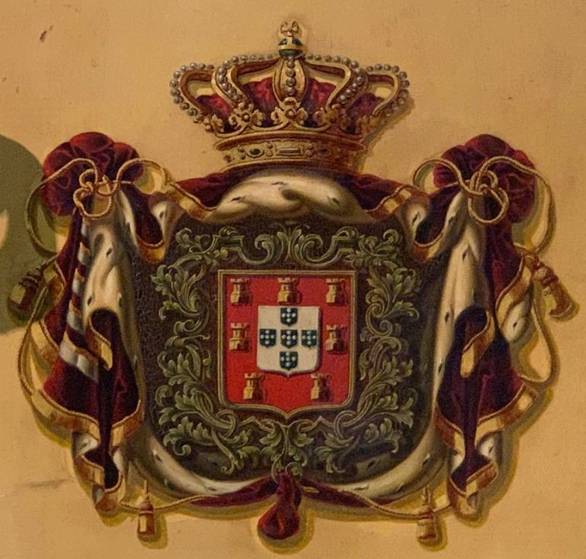
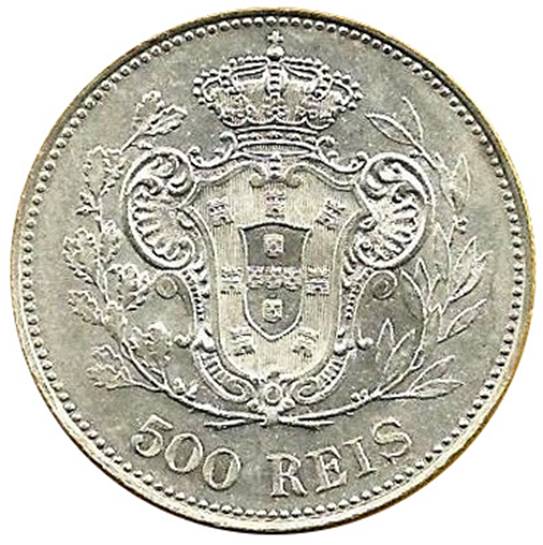
 Heraldry of the World
Heraldry of the World